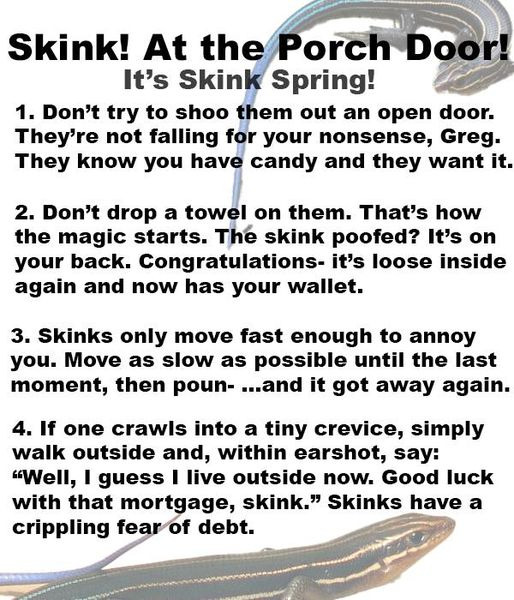#skinks
Text

Skink in the Sink. Written by Brenda Whitaker. Illustration by Sharron O'Neil. From Ranger Rick's Nature Magazine; March 1988 edition.
Internet Archive
2K notes
·
View notes
Text
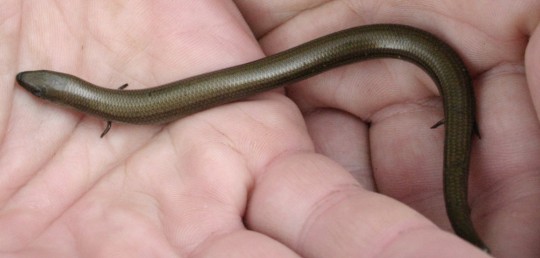
Italian Three-Toed Skink (Chalcides chalcides)
Family: Skink Family (Scincidae)
IUCN Conservation Status: Least Concern
Like several other species of lizard, the Italian Three-Toed Skink has adapted to move through areas covered with dense vegetation by developing an elongated, flexible, snake-like body with highly regressed limbs, although unlike many other "snake-like lizards" members of this species still possess four tiny limbs, each ending in a stumpy three-toed foot. Said limbs are far too small to support the skink's weight and serve no role in movement (which is achieved through an elegant snake-like slithering motion,) which has led many to question what purpose, if any, they serve; it is generally assumed that the limbs are vestigial and that, given sufficient time, the descendants of modern Italian Three-Toed Skinks will lose them entirely, although some herpetologists and evolutionary biologists have suggested that the continued existence of this species' limbs suggests that they must serve some function, such as being moved as part of a courtship display or allowing mating individuals to hold onto one another (although as these behaviours have never been observed these suggestions are entirely speculative.) Found in damp, well-vegetated areas across most of mainland Italy as well as Tunisia, Algeria, Libya and the nearby island of Sardinia, members of this species are diurnal, feed mainly on insects and breed during the spring; like most skinks, females of this species give birth to live young, with newborns, which resemble miniature adults, being independent immediately after birth.
--------------------------------------------------------------------------
Image Source: https://www.inaturalist.org/taxa/53646-Chalcides-chalcides
#Italian Three-Toed Skink#skink#skinks#animal#animals#zoology#biology#herpetology#herpetofauna#wildlife#european wildlife#african wildlife#reptile#reptiles#lizard#lizards#squamata#squamates
878 notes
·
View notes
Text
Doing sleepy lizard fieldwork in the Mid Murray today involved bountiful encounters with goofy fellas as usual
This guy is somehow missing the keratin on most of his large tail scales, revealing the bony scutes (osteoderms) beneath. We’re not exactly sure how this occurred, hopefully he’s not scuffed up too bad, but it is quite cool to look at


Then there’s grumps over here, sucking on his pacifier. We named him Cupcake after his delightful personality


Cupcake is now getting clamped because he’s naughty and bit someone (actually just taking a measurement of head depth)
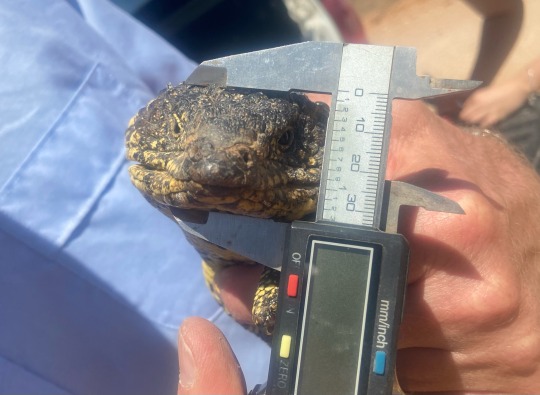
Polite gentleman patiently getting his tail measured (not a sleepy lizard, doesn’t want to be here)
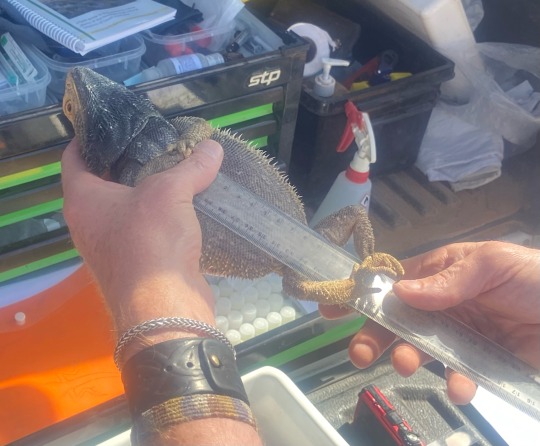
#south australia#australian wildlife#wildlife#reptile#reptiles#lizard#lizards#skinks#bearded dragon#shingleback#fieldwork#herpetology#my stuff
486 notes
·
View notes
Text

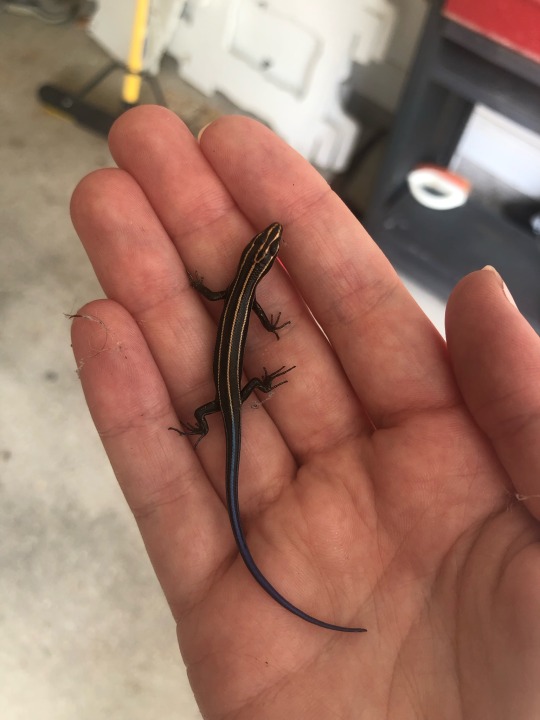
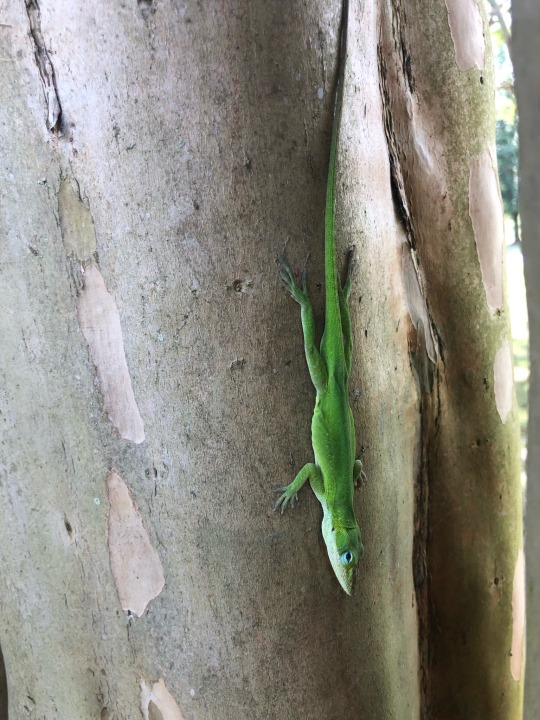



hot herpetologist summer i guess
466 notes
·
View notes
Text

Mouthbreather supreme

#gershwin the bluey#reptiles#reptiblr#blue tongue skink#blue tongue lizard#skinks#lizards#cecil the bearded dragon#herpetology#lizard#herps#reptilea#babygirl the kenyan sand boa
84 notes
·
View notes
Text
Uncharismatic Fact of the Day
One of the most common distinguishing features between snakes and lizards is that snakes don't have eyelids, while lizards do. However, like everything in biology, there are exceptions. For example, the snake-eyed skinks are named precisely for their lack of eyelids-- though they could hardly be confused for a snake!


(Images: A ragged snake-eyed skink (Cryptoblepharus pannosus) by me!)
If you send me proof that you’ve made a donation to UNRWA or another fund benefiting Palestinians– including esim donations and verified gofundmes– I’ll make art of any animal of your choosing.
57 notes
·
View notes
Text
Humanized!Skinks plus personality headcanons!!
inspired by @devilsrecreation's post! i've just done the underdeveloped members of shupavu's group :)
Nyeusi:

the sneaky guy! i really like him but there's not much i can think of to say about him, except i imagine he's kinda-friends with neema and ed in nikki's hc/au where the original hyena clan comes back. i think he'd be good at dissing people, and them not even knowing :)
Nyata:
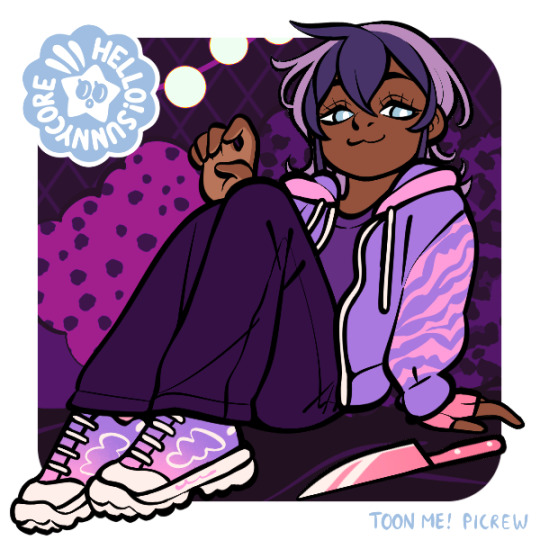
possibly my favourite design?? it was unintentional but i made her a little similar to nyeusi which is fun because i imagine they're a duo like shupavu and njano are, especially because they're the fastest skinks. i imagine they're competitive fuckers and keep trying to beat each other in races
Female Skink:
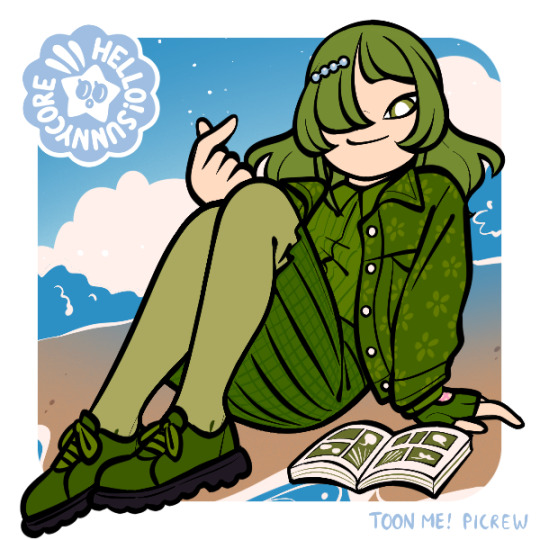
i think i'm going to headcanon her name to be Nyororo, which means "soft" or "smooth", because of her voice! the only thing we know about her lol. i also picked the name because it matches nyeusi and nyata. while making her i started liking the flowery design so i've headcannoned that she'd dress up all flowery-looking to help decieve people into thinking she's sweet, along with her smooth voice. admittedly i was getting kinda sick of green, and i noticed she has a slight blue tint around her eyes, so i gave her a little clip! why not :)
Waza:

i'm actually really happy with this design, or maybe i just like blue lol. i found out that Waza means "mediate" so i'm wondering if he's the mediator of the group in some way. he doesn't talk, but he isn't shown to communicate using his tongue like nyeusi does, so i'm wondering if he literally just shakes his head at others when he dissaproves of what they're doing 😭 he could communicate with head and tail movements, because he's the keenest of sight he would alert the others of what he sees in silence
Male Skink:

i'm going to go ahead and headcannon this guy's name as Hasira, meaning "vex" or "angry" because literally the only notable thing about him is his constant grumpy face. i've also headcannoned him and Waza as friends, and i think Hasira and Waza sounds nice. because of his supposed grumpiness i wonder if he might be one of the older members of the group. like a reluctant adult around a bunch of rowdy teenagers kinda vibe. who knows, he's completely free reign for personality like waza lol
not sure if i'm 100% happy with the designs but that's bc i'm a perfectionist- the picrew didn't have too many colour options but i think everyone looks alright despite that. btw hair was completely random bc i don't fucking know 😭 i hope you liked tho :)
i used this picrew <3
#the lion guard#tlg#tlg outlanders#tlg human au#tlg as humans#tlg outlanders as humans#tlg skinks#skinks#nyeusi#nyata#waza#human au#picrew
79 notes
·
View notes
Photo
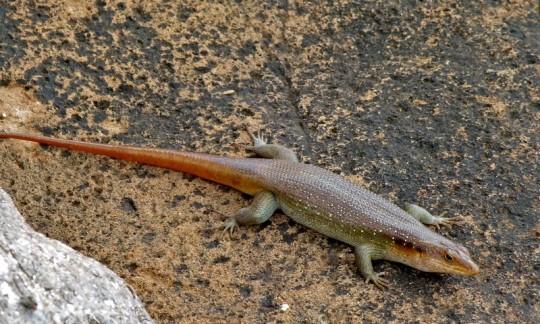
A male rainbow skink (Trachylepis margaritifera) in South Africa, Africa
by Bernard Dupont
#rainbow skink#skinks#lizards#reptiles#Trachylepis margaritifera#trachylepis#scincidae#squamata#reptilia#chordata#wildlife: south africa#wildlife: africa
150 notes
·
View notes
Text
Taxonomy Tournament: Reptiles
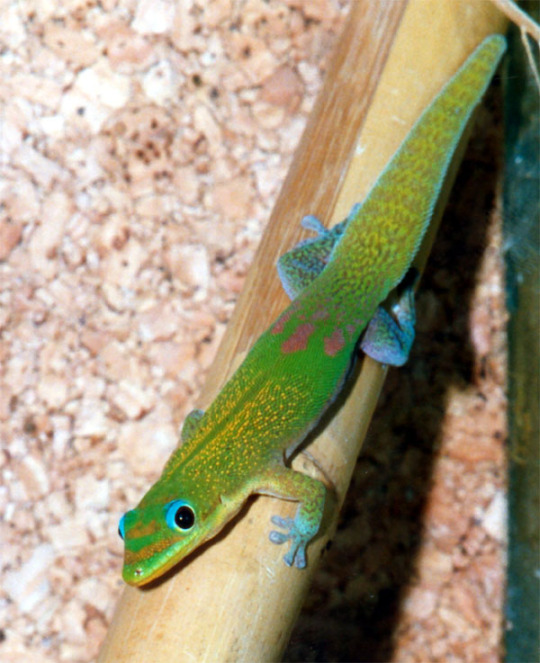

Gekkota. This infraorder is made up of geckos, small typically nocturnal lizards
Scinciformata. This clade is made up of skinks, lizards which typically have no pronounced neck and smaller (or no) limbs
#animals#biology#polls#poll tournament#zoology#lizards#geckos#reptiles#tetrapods#skinks#Gekkota#Scinciformata#0x57v0xa8#animal tournament#Animal Tournament Round 1
48 notes
·
View notes
Text

My second entry for the Lion's Eye Institute's Eye to Eye competition.
Cryptoblepharus buchananii, Bibra Lake, Western Australia.
Canon R7
Canon EF 100mm f/2.8 USM macro
#lizards#skinks#macro#eyes#reptiles#herpetology#macro photography#Cryptoblepharus buchananii#western australia
44 notes
·
View notes
Text
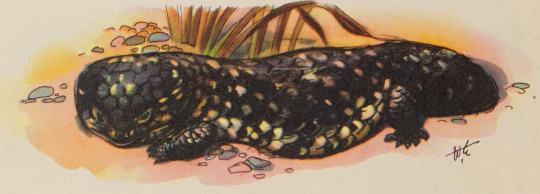
Shingleback skink (Tiliqua rugosa)
Reptiles and Amphibians of the World. Written by Hans Hvass. Illustrated by Wilhelm Eigener. Originally published in 1958.
Internet Archive
358 notes
·
View notes
Text
brought him to the back yard yesterday for the first time! he seemed to enjoy it c:
#foxtrot the skink#reptiblr#blue tongue lizard#blue tongue skink#reptile blogging#lizards#skinks#reptiles
108 notes
·
View notes
Text

Be weirdos together
#comic#original comic#oc comic#skinks#skink#cute#weird#be yourself#furry#art#digital art#sfwfurryart
23 notes
·
View notes
Text

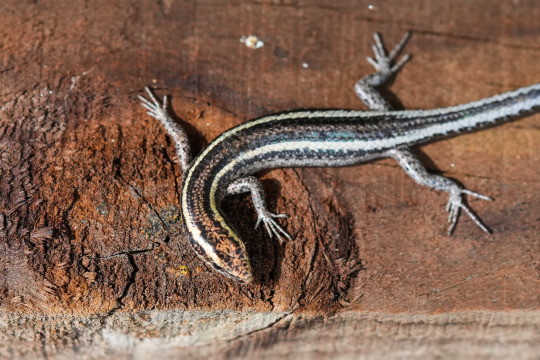


one of our garden skinks sunbathing :)
Elegant Snake-Eyed Skink (Cryptoblepharus pulcher).
#ljsbugblog#not a bug#sauria#lizards#reptilia#reptiles#scincidae#skinks#cryptoblepharus#snake-eyed skinks#cryptoblepharus pulcher#elegant snake-eyed skink#macro
42 notes
·
View notes
Text
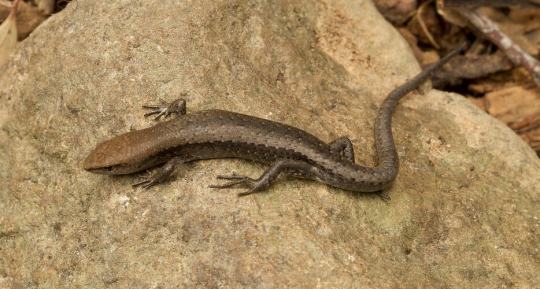
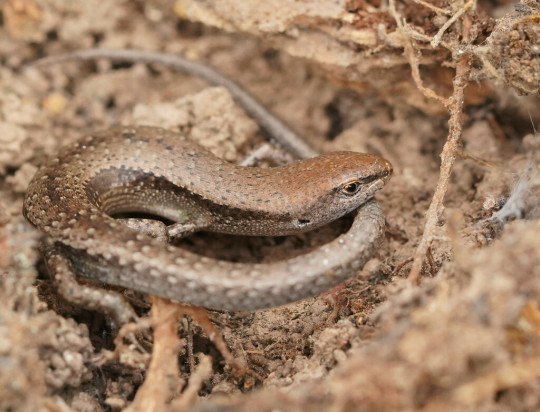
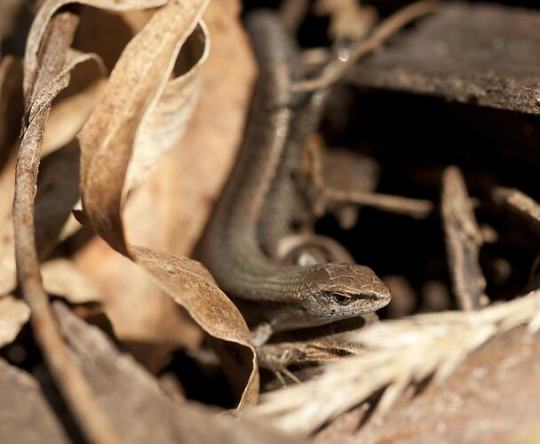
Lampropholis guichenoti, more popularly known as the grass skink, Guichenot's grass skink, the pale-flecked garden sunskink, or the penny lizard, is a small species of skink found throughout western and southern Australia. Its primary habitat is grasslands and scrublands with plenty of vegetative cover, though they are also a common sight in suburban backyards.
Though a nondescript brown, the penny lizard can be identified by a black stripe running the length of its body. Females can be distinguished by the light orange or reddish tint to their underbellies, while males are light grey. However, identifying the grass skink may prove difficult, as their small size makes them extremely good at hiding; on average an individual is only 8–10 cm (3.1–3.9 in) and weighs less than 2g (0.07 oz).
Male L. guichenoti are extremely terrirotial, and will fiercely defend their territory from other males- particularly in the spring. Breeding begins in September or October and continues throughout the summer. After mating, the female will lay about 2-6 eggs in a communal clutch alongside other females; in total these clutches can contain up to 250 eggs. These eggs hatch approximately 30 days to hatch, and young are fully independent upon emerging. On average, the grass skink can live for 2-3 years in the wild.
Because of their small size and lack of defensive systems, Guichenot's grass skink is an easy prey target for many species. Birds and feral cats are the primary predators, but the grass skink can also become a meal for larger lizards and snakes. The main way L. guichenoti avoids being lunch is by dropping its tail-- a common skink tactic. The tail continues to wriggle after being dropped, distracting the predator while the skink makes its escape and later regrows its tail. The penny lizard itself feeds mainly on small insects like crickets, isopods, earthworms, flies, and ants, as well as the occasional fruit or vegetable.
Conservation status: Lampropholis guichenoti has not been evaluated by the IUCN, but its population is generally considered to be large and stable.
If you like what I do, consider leaving a tip or buying me a kofi!
Photos
David Paul
Colin Silvey
Reiner Richter via iNaturalist
#grass skink#penny lizard#Squamata#Scincidae#sunskinks#skinks#lizards#squamates#reptiles#grasslands#grassland reptiles#scrubland#scrubland reptiles#urban fauna#urban reptiles#oceania#australia#south australia#west australia#animal facts#biology#zoology#ecology
65 notes
·
View notes
